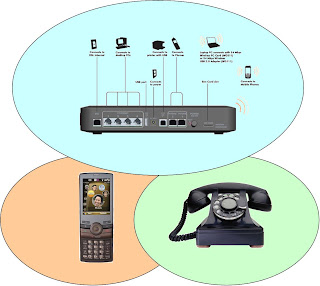
Mobile operators have had a unique influence on personal communications.
The rise of mobile services has put a phone into nearly everyone’s hand.
Yet as a network-based service, the mobile has been largely disconnected from our most personal location:
the home.
Over the past few years, mobile service providers have started to reach into the home by acquiring broadband service providers. The attraction is easy to see. Consumers buy mobile, consumers buy broadband, why not get broadband service from your mobile provider?
In addition, Universal Mobile Access technologies enable mobile providers to deliver mobile services over the broadband network through Wi-Fi and femtocell radios in the home. This ‘double-play’ service opportunity is building, with operators trialing and deploying ‘Home Zone’ services in the market today.
But yesterday’s announcement of T-Mobile’s fixed line home service, a VoIP offer from a mobile provider, suddenly opens up the mobile operator’s triple play: mobile, broadband and fixed.
In all fairness, mobile operators have tried to offer fixed line VoIP services in the past. But rather than using the existing mobile voice switches (MSCs), mobile operators were forced to buy new VoIP switches. Because these switches were separate from the MSCs providing the mobile voice service, there was a ‘disconnect’ to the offer.
There was a significant amount of work to integrate the bill from the VoIP switch into the bill for the mobile switch (in some cases, consumers received two bills…). With a new switch, a different provisioning system needed to be established to enable the VoIP service. Because mobile calls are anchored on the MSC and calls on the fixed network are anchored on the VoIP switch, there is no easy way to provide combinational services like dual ring and single voice mail.
With the advent of the UMA terminal adaptor, now mobile operators can seamlessly integrate fixed line home phone service directly into their existing mobile switching infrastructure, billing and provisioning systems. Calls on the fixed line appear simply as a second line within a subscriber’s existing service.
The market is already on the trajectory of a “Home Zone Triple Play”. Clearly the Linksys product, which supports a UMA terminal adaptor and Wi-Fi, is ideal for an operator to bring together dual-mode service, home phone service and broadband.
Within the femtocell community, there is a tremendous push to move into integrated femtocell products. Many companies have announced ‘integrated’ femtocell platforms to support DSL, Wi-Fi, and fixed line VoIP.
Looks like mobile operators are starting to attack the home.



































